I’ve been writing about interesting vinyl manufacturing anomolies for the past few days. Tuesday I covered Flexo Records and flexidiscs, and yesterday I wrote about parallel grooves. Today’s bit is about ‘Lock grooves:’ grooves that feed back into themselves so that they repeat indefinately. You should probably read all of these entries because I hear that’s what the ladies are looking for these days: men with EXTENSIVE knowledge of obscure vinyl manufacturing practices.
Records with lockgrooves are cut like any other record until the beginning of the loop is reached. At this point, instead of spiraling inward, the radius of the groove becomes fixed, producing a perfectly circular loop that ends where it began.
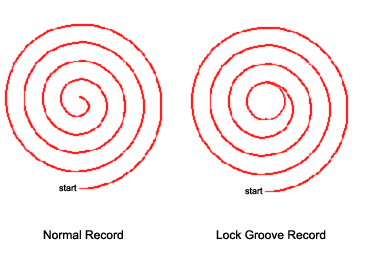
The most familiar example of this amongst record collecter types is Lou Reed’s infamous ‘Metal Machine Music.’ Recorded as a ‘Fuck You’ to Reed’s record label, the album is often described as ‘Unlistenable.’ The AMG review sums up the sentiment nicely:
“One would be hard-pressed to name a major artist who ever released an album as thoroughly alienating as Lou Reed’s Metal Machine Music.”
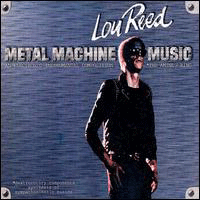
The the end of side four is a lock groove that extends the cacaphony to a length only limited by the listener. Reed himself has said of the album: “Well, anyone who gets to side four is dumber than I am.”
Given the Monty Python troupe’s previous history with clever vinyl mastering, it should come as no surprise that
they’ve already covered this territory:
“…on another Monty Python record, the Pirannha Bros. sketch at the end of one side finished with a lockgroove of “Sorry squire, I scratched the record
I scratched the record I scratched the record… ad infinitum (or the next power cut). Hours of fun.”
The album in question appears to be ‘Another Monty Python Record,’ but I haven’t yet confirmed this.
A few ‘serious’ artists have used a final lockgroove to include jokes, and in the case of English band Heaven 17, a perpetual pun. The final track on their ‘Penthouse & Pavement’ album – ‘We’re Going
to Live for a Very Long Time’ – builds to a never-ending groove repeating the phrase ‘For a very long time.’ The James Gang’s “Yer Album” features messages in the lockgrooves that end each side. At the end of side one, the lockgroove repeats “turn me over, turn me over, turn
me over…”; and on side two it plays “play me again, play me again, play me
again…”.
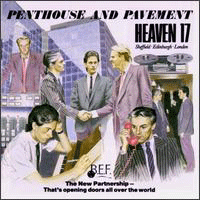

Other artists have used the repetition of a lockgroove loop to exaggerate the duration of certain sounds. At the end of side two of Abba’s ‘Super Trouper,’ after the final song – “Like Old Friends Do” – the audience’s applause continues into a locked groove (From a NG posting on the topic: “Wow, must have been a
great performance, they’re giving them a neverending standing ovation…”). Side two of Pink Floyd’s ‘Atom Heart Mother’ ends with ‘Alan’s Psychedelic
Breakfast,’ and the dripping tap continues until you lift the needle.
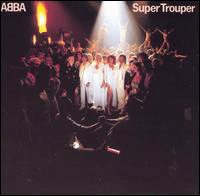

Of note to crazy record collector types is
“Loop,” a flexidisc by the Velvet Underground which was included in the December 1966 issue of Aspen Magazine (Edited by Andy Warhol). Details, from a VU discography site:
“Loop is the B-side. The label says “Guitar and feedback”, “First half of a 15-minute recording made with two monaural tape recorders” and “Final groove purposely left open”. The credits went to John Cale who is supposedly the only person playing on Loop. The flexi has a closed-groove ending so the last groove repeats itself ad infinitum.”
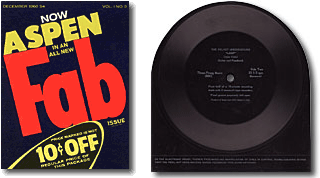
Moving beyond the novelty of the loop, some artists have creatively used lockgrooves to hide extra tracks, creating a ‘false ending’ to the record before the hidden track’s grooves. The listener could hear the ‘hidden’ music only by manually placing the needle beyond the lock groove. This technique was used on the Pale Saints’ “Half-Life” 12,” which had a lock-groove after the second song on the second side, ‘hiding’ an unlisted third song; and in similar fashion on the split 12″ by Nurse With Wound / Sol Invictus / Current 93.
The 1968 Moby Grape album ‘WOW’ has a lockgroove that seperates the song “Just Like Gene Autry: A Foxtrot,” which unlike the rest of the album, is mastered at 78 RPM. The track is also said to be ‘mixed to sound like an old 78.’

My interest in lockgrooves has led me to do something I NEVER would have guessed I’d ever do: I got into an eBay bidding war over a Lee Ranaldo record. Ranaldo’s 1987 SST release ‘From Here to Infinity’ consists entirely of songs that end in lock grooves. Each song builds to a perpetual 2-second loop which continues until you get up and advance to the next track manually. In the middle of one side is an etching of a flaming serpent chasing its tail around the record. Apparently SST also released this on CD, which seems to defeat the purpose. At any rate, I lost the auction, so if a vinyl copy pops up on eBay again anytime soon you’re not allowed to bid against me, I hereby decree.
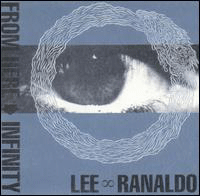
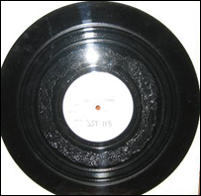
A legend amongst lockgroove enthusiasts is Boyd Rice, an avant garde electronic experimentalist who is “notable for being one of the first avant-garde rock artists to use turntables in his work,” according to his AMG bio. He records under the name ‘Non,’ and his most influential work appears to be 1978’s ‘Pagan Muzak.’
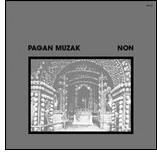
Mute Records reissued ‘Pagan Music’ at some point, and they’ve got a great article on the album here:
“Pagan Muzak is a 7″ vinyl long playing record housed in a 12” sleeve. It consists of 17 locked/looped grooves, each of them containing a different noise. A second axis hole drilled off-centre doubles the number of tracks; and as it can be played back at up to four speeds – 16, 33, 45 or 78rpm – working out just how many tracks Pagan Muzak effectively offers the listener involves complicated calculations of all the different playback combinations of axis choice, turntable speeds and the grooves themselves. The mind boggles, yet when it was sold as a long playing record, some buyers thought they’d been short-changed by at least five inches. Boyd recalls, “Because it came out as a 7″ record in an album sleeve, people used to go,[in a whining voice] ‘It says LP on here. . .’ ‘Well,’ I said, ‘LP means long player, and this is the longest player you are ever going to find’.”
“Between the record’s peculiar format and the noises contained in its locked grooves, Pagan Muzak clearly anticipated the sound and shape of many music practices to come. Rice’s radicalisation of vinyl reversed the listener’s usual passive relationship with the record as a sound carrier. To listen to it meant first of all making ‘musical’ choices regarding pitch and tempo, dependent on playback axis and turntable speed. In this sense, putting on Pagan Muzak was a kind of rehearsal of a near future, when DJs and turntablists would play records as a musical instrument.”
…
“Getting the idea was the relatively easy part. Getting the record manufactured presented a formidable logistical challenge. Boyd continues, “Well, because they always lock off a groove at the end of a record, it seemed reasonable to me that they would be able to do it at any mastering plant. But everyone I spoke to said, ‘No, you can’t do this, it’s impossible, the technology doesn’t exist’. Then these people in Virginia said, ‘Oh yeah, we should be able to do that, I don’t see why not’. But a couple of months later the tapes came back with a letter saying it is not possible. Finally I went to this mastering plant in LA, and talked to its president, and he said, ‘Well, yeah, I think we could do that’. He kind of took it on as a personal challenge and did it himself. . . Always go to the top!”
Rice has also released the ‘Rangnock Rune’ 12″, with four locked groves
and and etching on orange/reddish vinyl. Other career highlights include 1984’s ‘Easy Listening for the Hard of Hearing,’ an album of percussion sounds produced by everyday objects. Mute maintains a fairly comprehensive Non page with a discography. It’s worth noting that a history of questionable politics has marred his reputation. The AMG bio touches on some of these unflattering associations:
“His career moved towards a bizarre mix of a cocktail lounge sounds, avant garde noise, and misanthropic folk music as it went along, bringing him a mild cult audience. But anti-Jewish and anti-Christian statements that sprung from his association with a cult and his friendship with Charlie Manson did severe damage to any momentum his career could have had and left him fairly obscure by the mid-90’s.”
There are several newsgroup threads discussing his various ambiguous political connections. Most of the information is pretty vague, but there are threads here, here, and here.
The taj mahals of lockgroove ridiculousness are the RRR 100 and RRR 500 compilations, a 7″ and 12″ consisting of nothing but lock grooves by various artists. RRR 100 was released first and contains, as the title suggests, 100 lock grooves – 50 to a side. The RRR 500 LP features a ridiculous 250 lock grooves per side, each running 1 to 2 seconds. A good thread on the staggering impracticality of the LP is here:
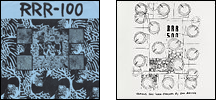
Sean Casey: “quick question about these locked groove records:
i assume you have to pick up the needle to get to
the next groove, right? but with 500 people, how
do you tell one groove from the next? are the
grooves spaced out more than on a normal record?”‘Skincrime’: “Let’s see, we’ve got 33 1/3 RPM multiplied by 20 Minutes (say for an average LP
side, could be alot more, or less……) and we get 666 grooves, so, the
grooves are a SLIGHT bit further apart then on a Normal record……
As far as FINDING a particular groove that you want to listen to…….well,
have fun………”Erik Hoffman: “I have a Technics 1200 turntable and it just so happens that when I lift
the stylus arm and then put it back down it advances one groove. Of
course if I wanted to listen to lock groove # 224 I would have to do
this 223 times!! This was not a problem with the 100 lock groove 7″. I
can’t imagine doing this witht the LP.”‘Voice & Salt’: “A nice side effect of the fact it’s difficult to find a particular groove
is that they’re anonymous — oh well, I guess we’ll just have to listen
(over and over and over again….)
“
A second pressing of RRR 500 is available here from forced exposure.
Blake Edwards, the man behind recording project Vertonen released a 7″ called ‘Lock Up‘ in the early 90’s. The A-side consists of 15 lock grooves. Blake has posted the story of his experience getting the 7″ pressed on his own, and it’s an interesting read if you’re into that end of music production / label business. There are few bits about the nature of manufacturing lock grooves within the epic tale:
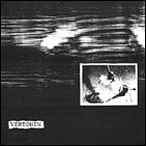
“…when the lock groove locks, you usually get a click. However, some of the loops I recorded were single pitch loops, so when the groove locked there was a fuzzy pitch shift. Not heinous, but somewhat annoying nonetheless. There was nothing I could do about it anyway, since apparently that’s just the nature of the beast of lock grooves.”
Also: ‘The Lock Grooves’ is a good name for a funk band.